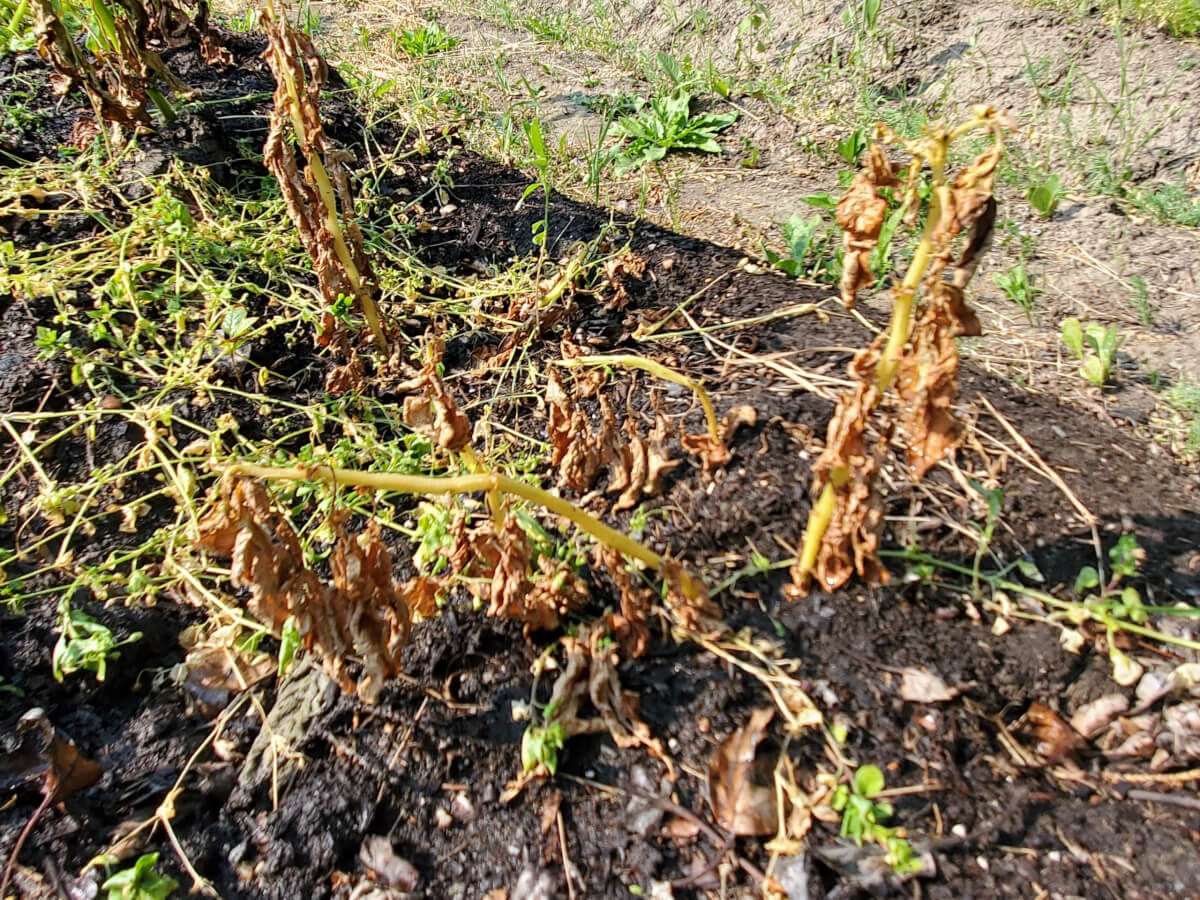Well, we’ve had a bit of a catastrophe this year with one of our major crops. We are pretty sure our potatoes got hit with early blight and it’s going to severely impact our harvest this year. It’s important for us to show our failures, as even experienced growers can experience serious troubles.
Interesting fact? Potato blight has literally caused major famines in historic times. It was responsible for the 1840’s famine in Ireland, devastating a major agricultural crop for over a decade, taking nearly one million lives.
Diagnosing plant disease is much tougher than nutritional deficiency. Our plants can’t tell us what’s wrong with them, you can only observe the progression and what it looks like over time. In this case, we’ve seen a progressive yellowing of more mature foliage, browning of stems and eventual necrosis of the lower leaves. At the advanced stage, the entire foliage is affected.
The problem is, this could also be black spot, which can look exactly like early blight. We do see some black spots on the foliage, indicating a strong possibility of this disease as well. We’re leaning strongly into this diagnosis and it may just be that we’ll never be completely sure.
It’s very obscure for us to run into this, since our potato beds are on a seven year rotation cycle. It was literally 2016 when we last grew potatoes in this bed and this also the first time we’ve seen it across this garden.
We’re not really sure what can be done at this point as we aren’t big fans of applying pesticides or fungal treatments to our food. Also, sourcing the correct treatments depends on certainty of the diagnosis, plus acquiring the correct treatment can be tough in a place like Fairbanks. We don’t exactly have big ag stores with every conceivable fungicide and pesticide on the shelves.
Our efforts are likely best focused on containment. We are thinking about executing an early harvest and cutting our losses at this point. When dealing with disease, the foliage will need to be fully contained. Diseased plants should not be put into compost piles, but rather thrown away. Failure to do this can run the risk of the disease continuing in your growing space.
We are hoping we can get through this without long term impacts to our garden. The bad news is that we won’t know until next season, 3/4ths of the way through, as to whether we have a larger problem on our hands.


